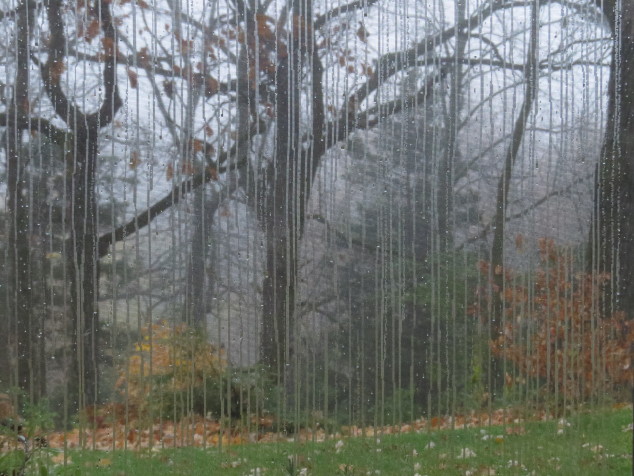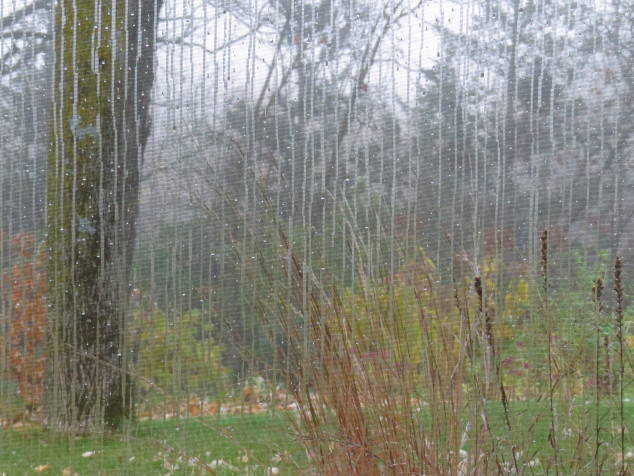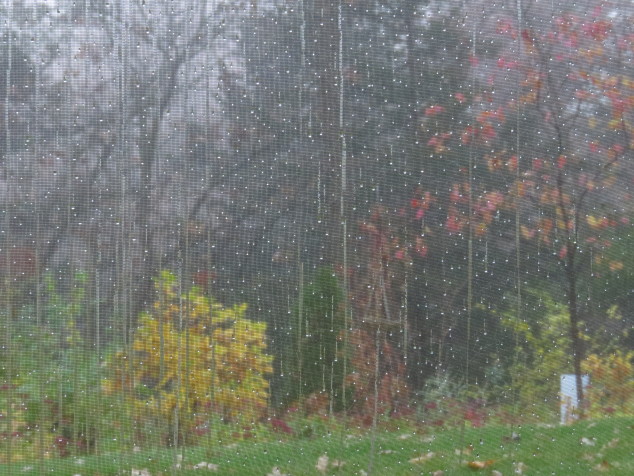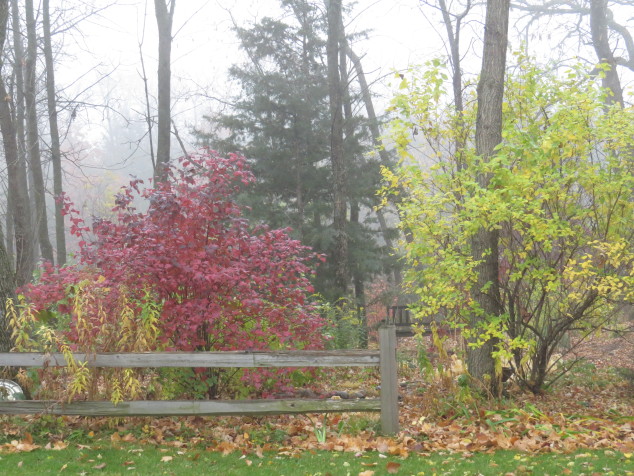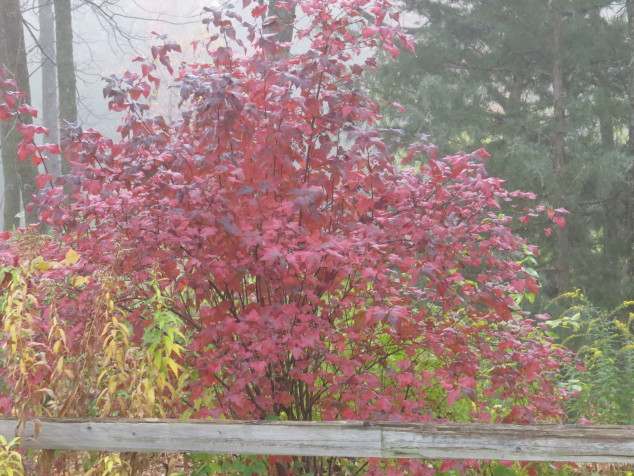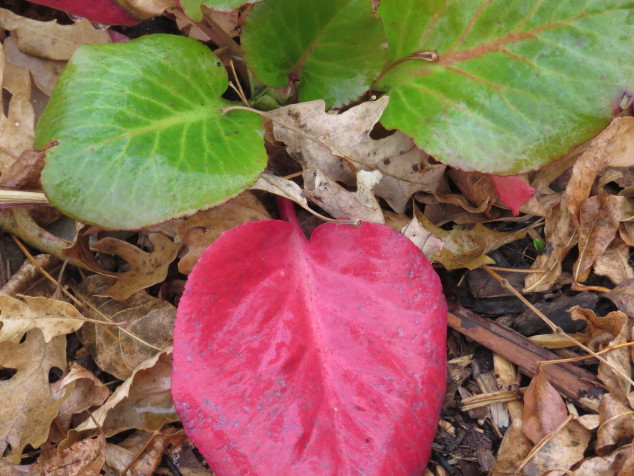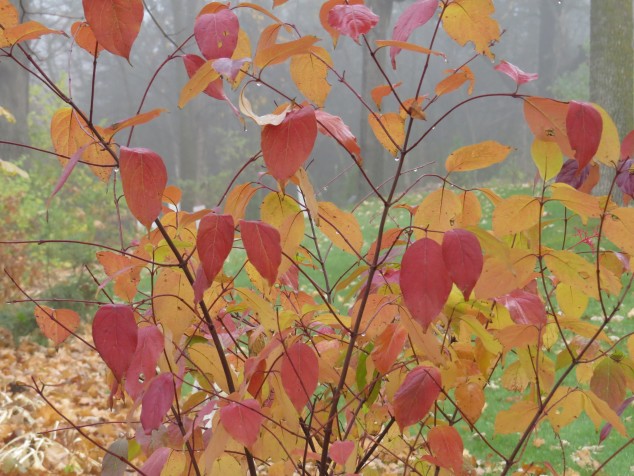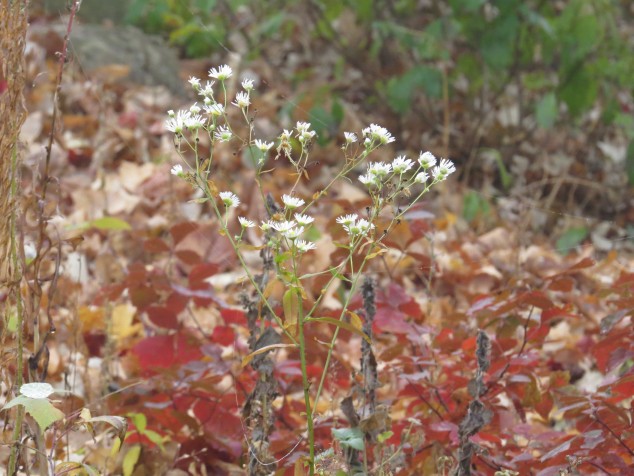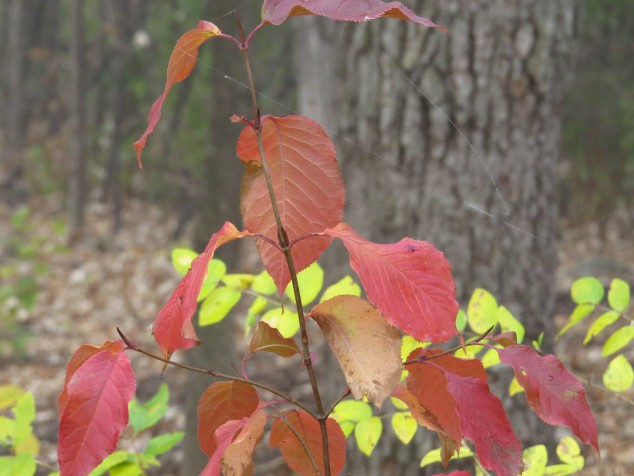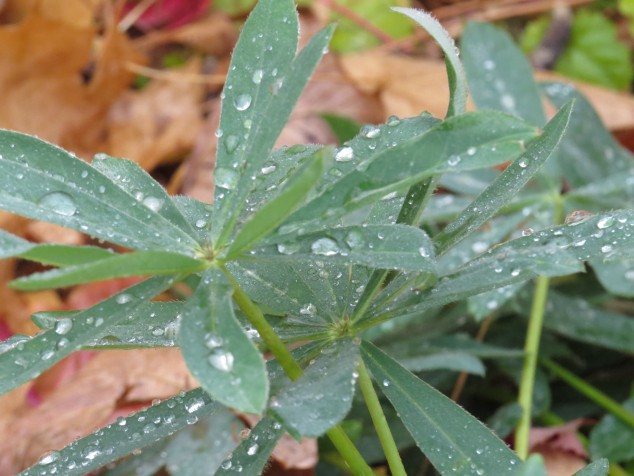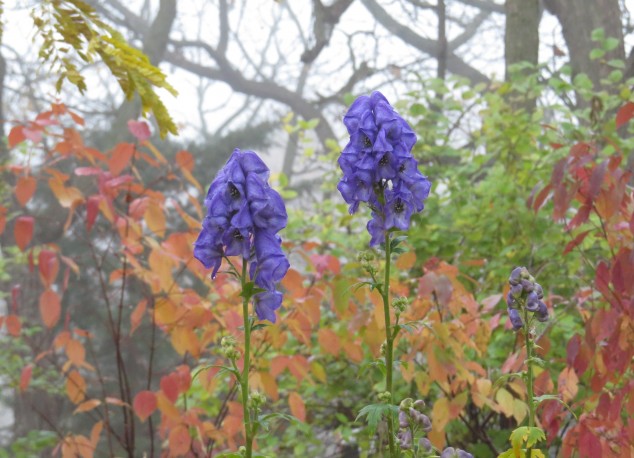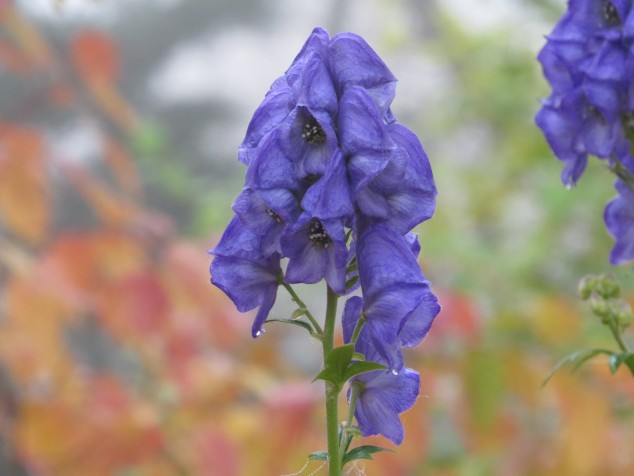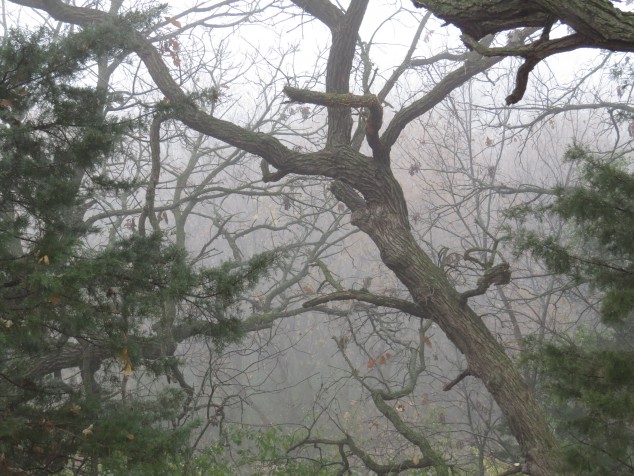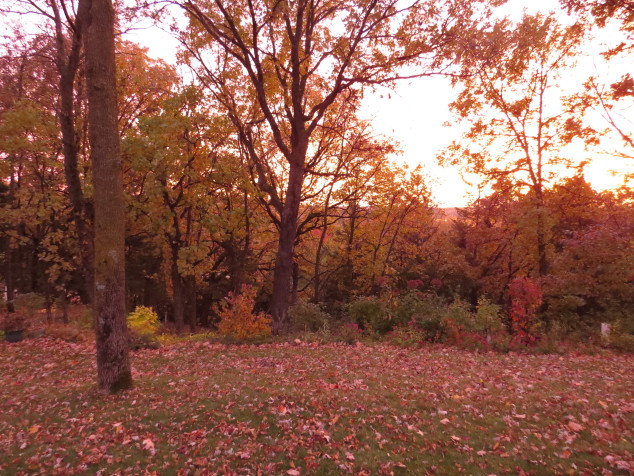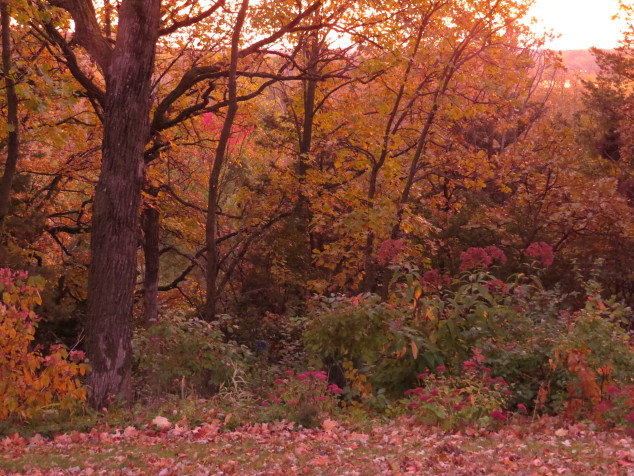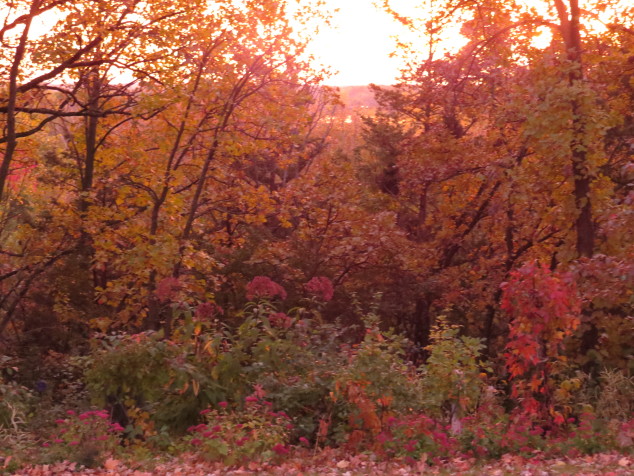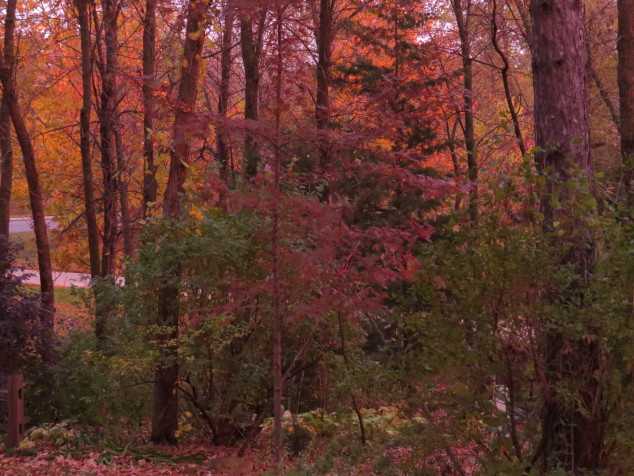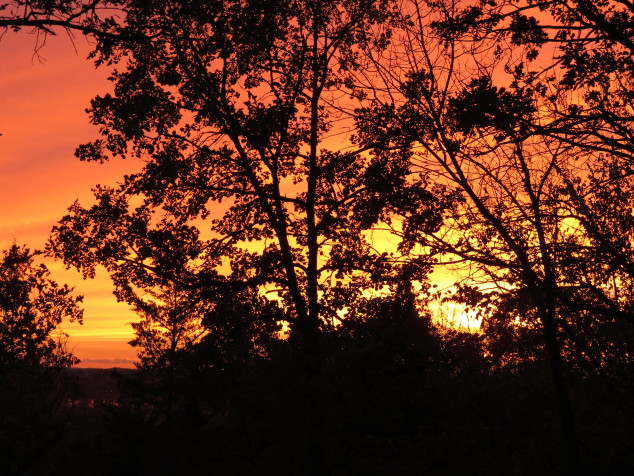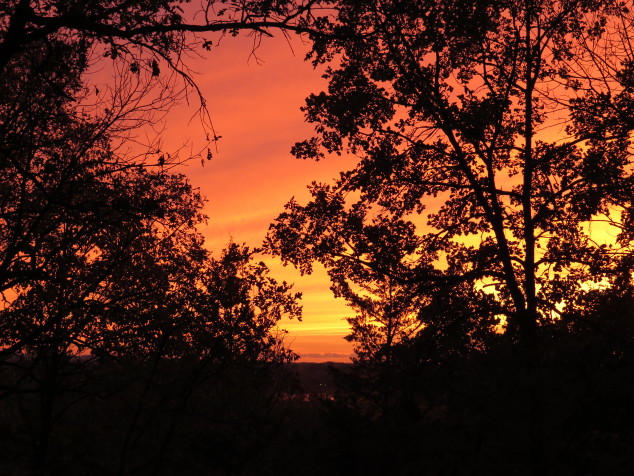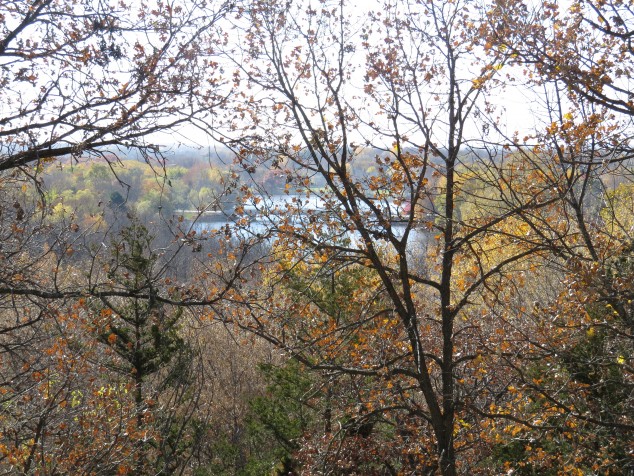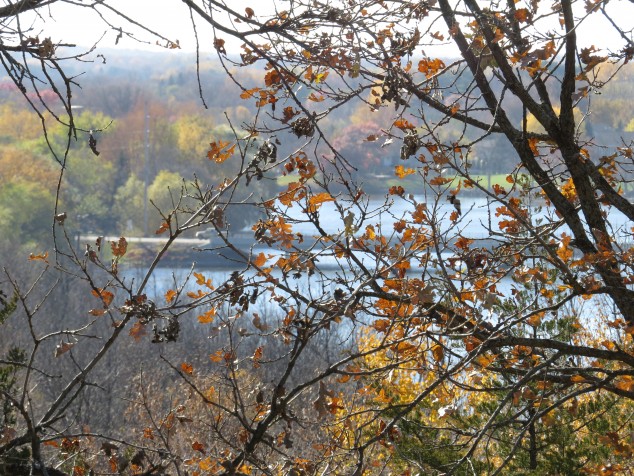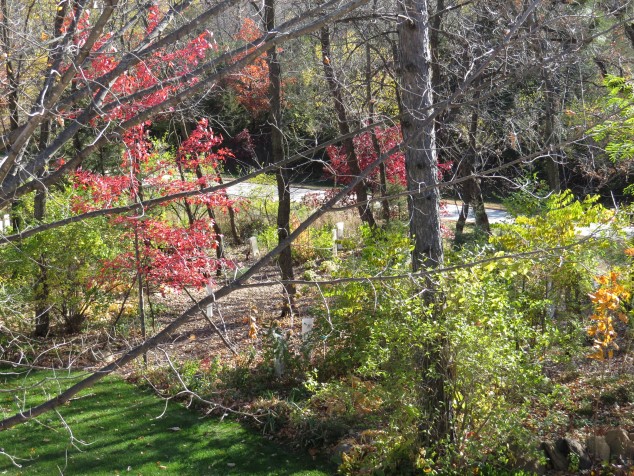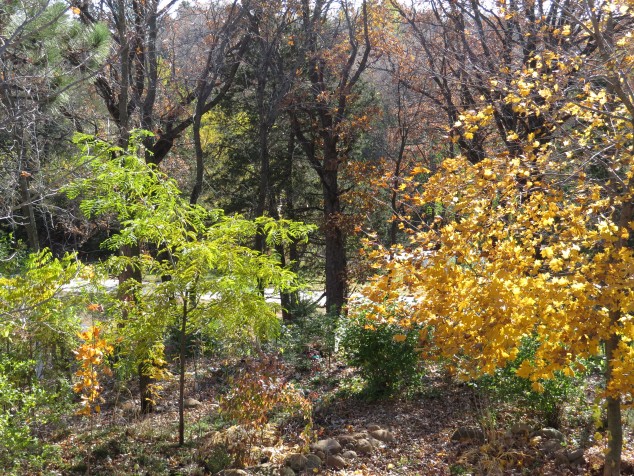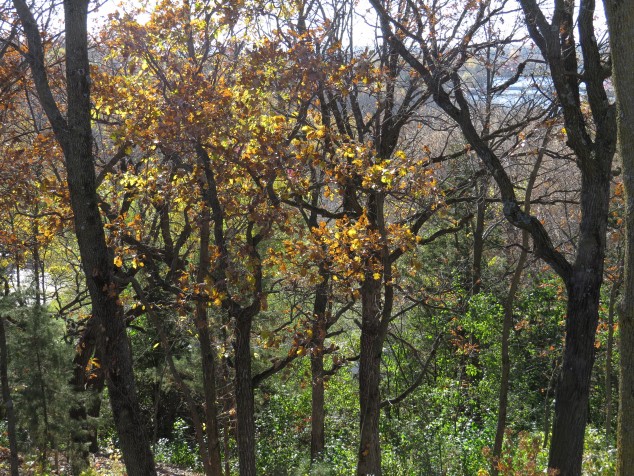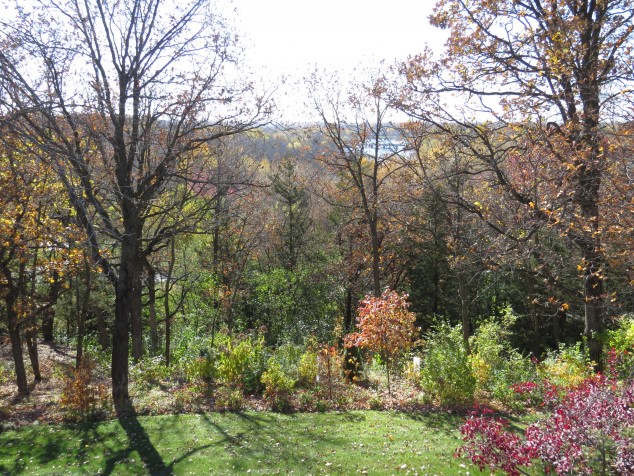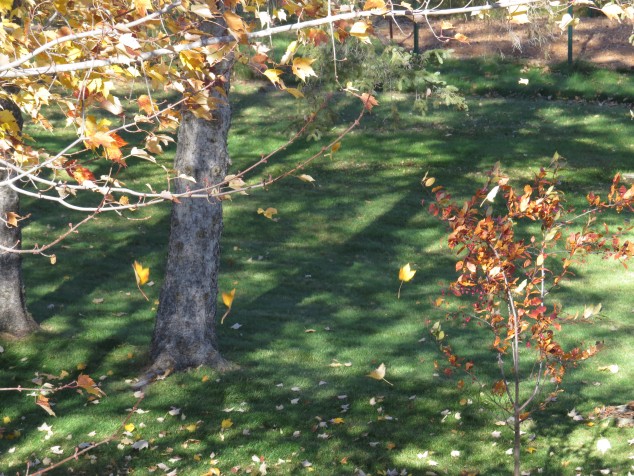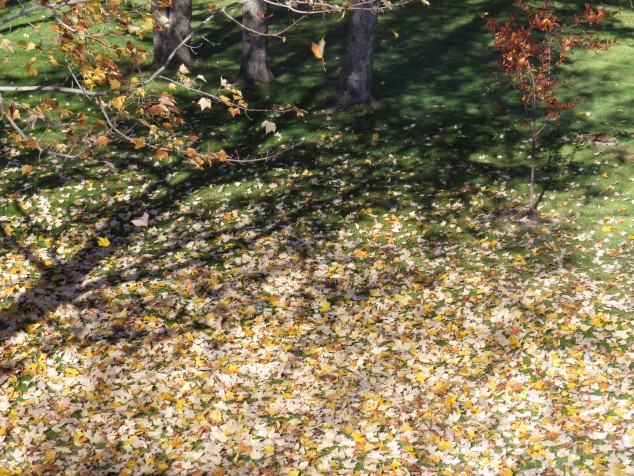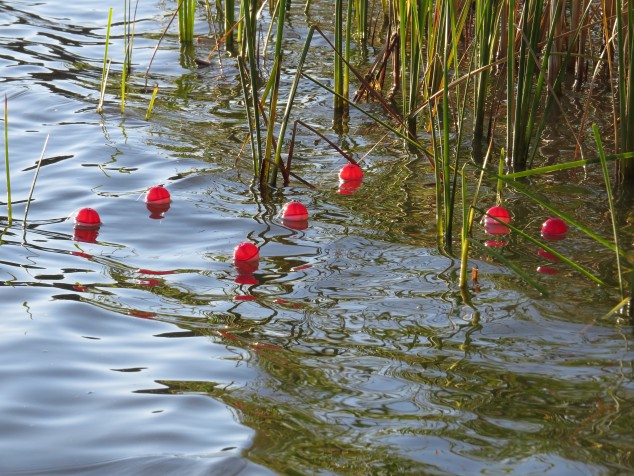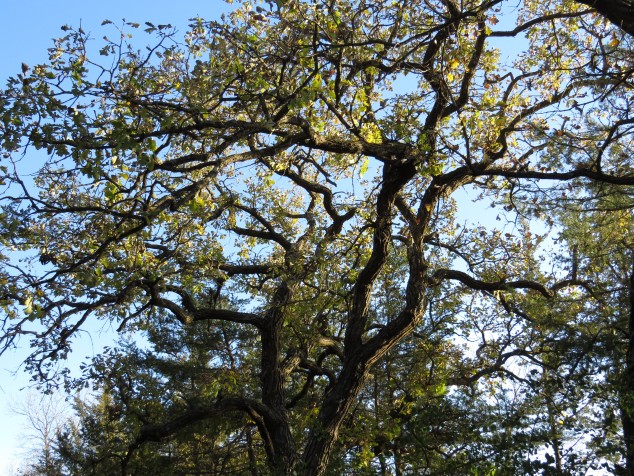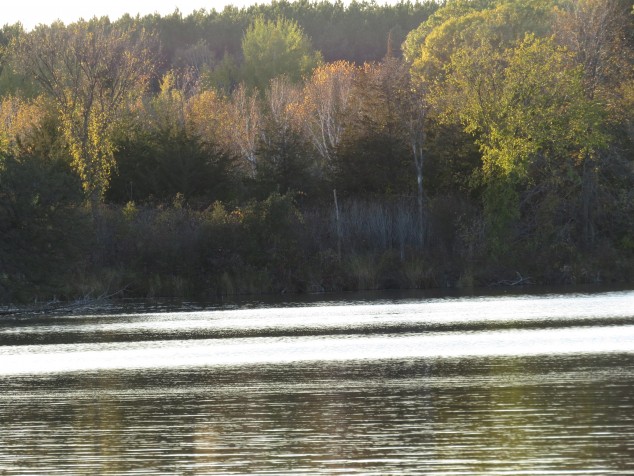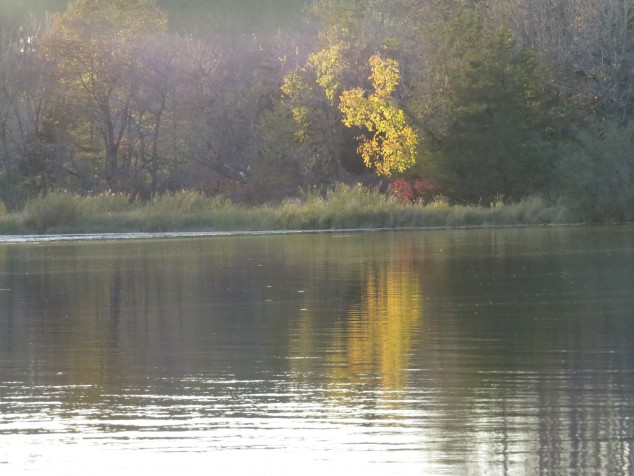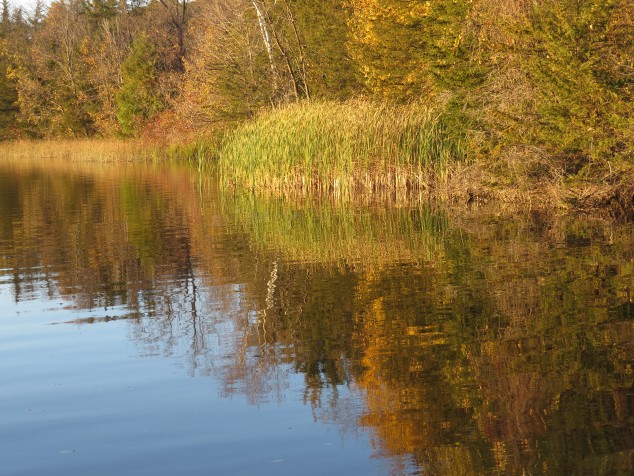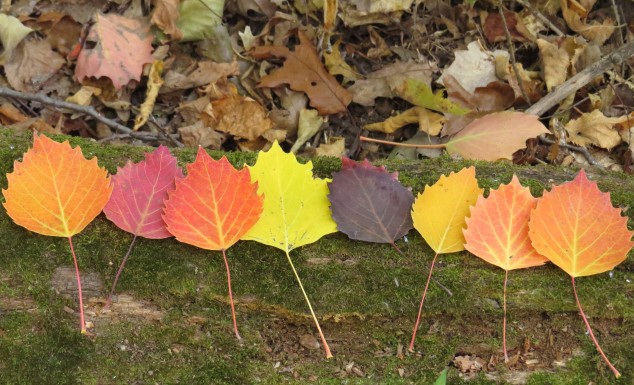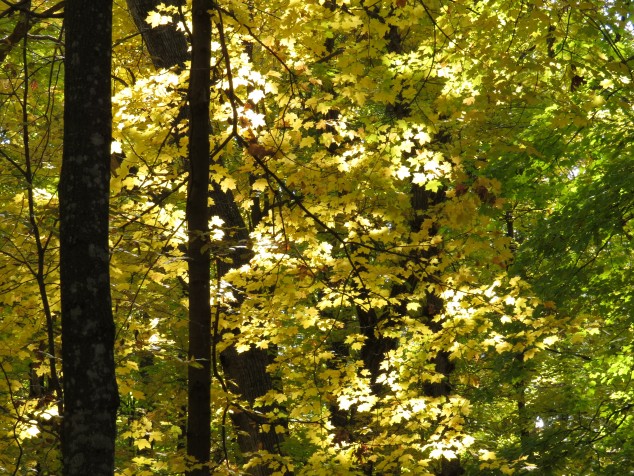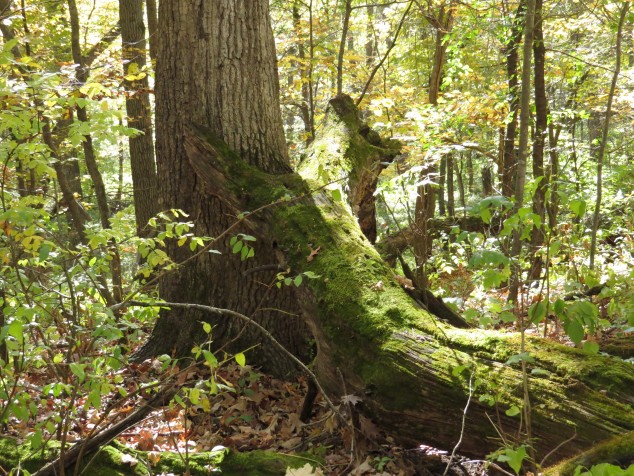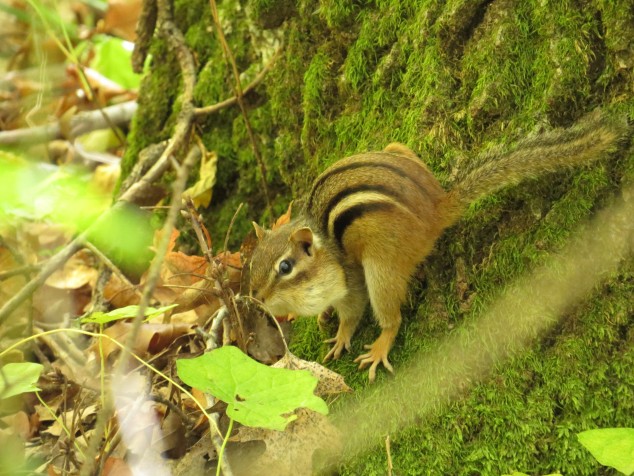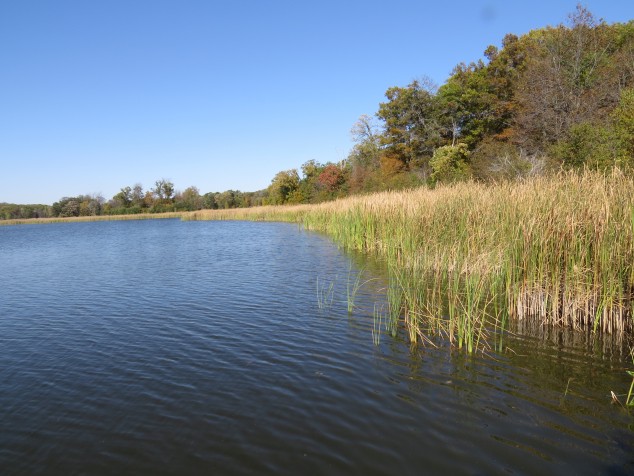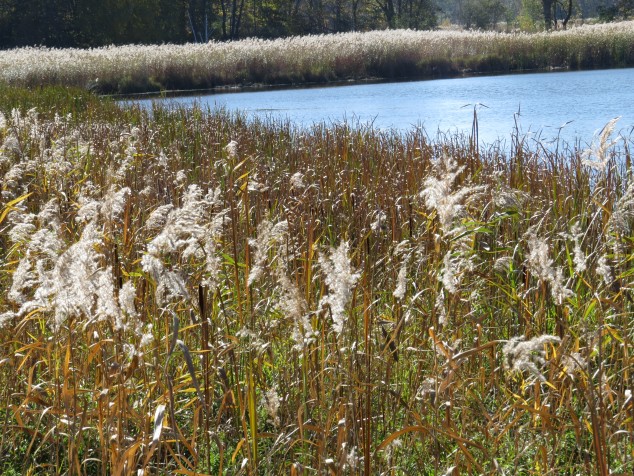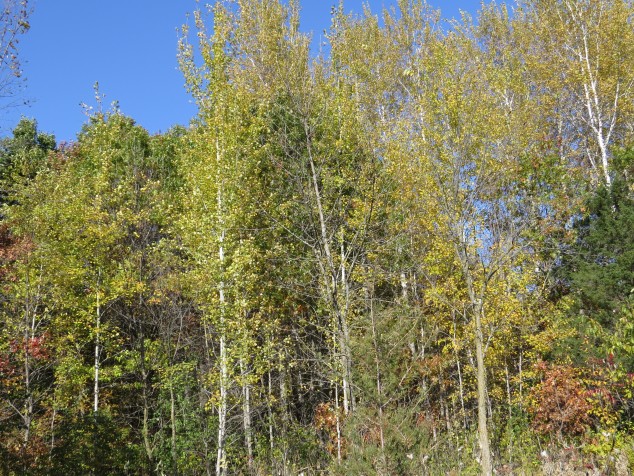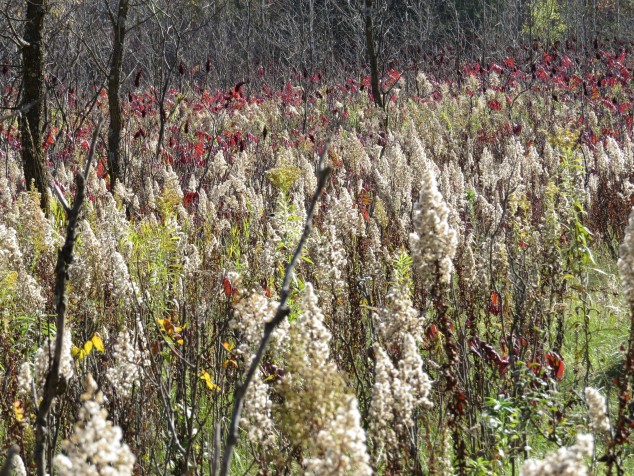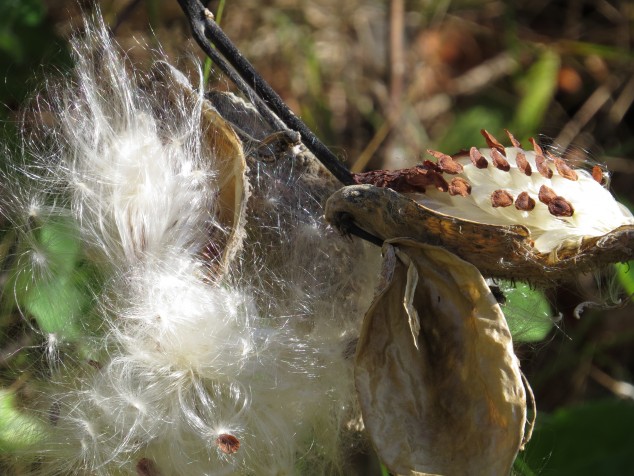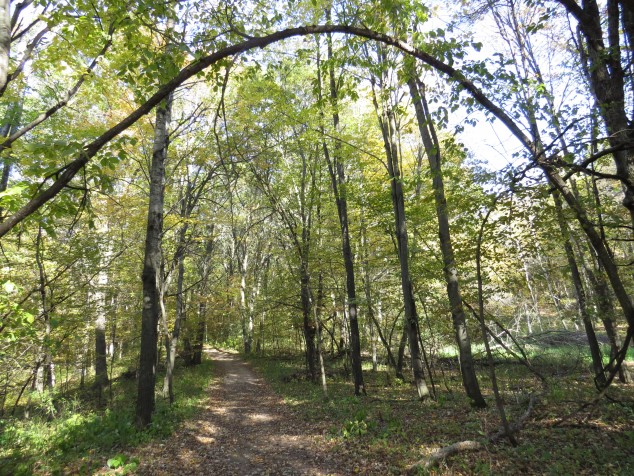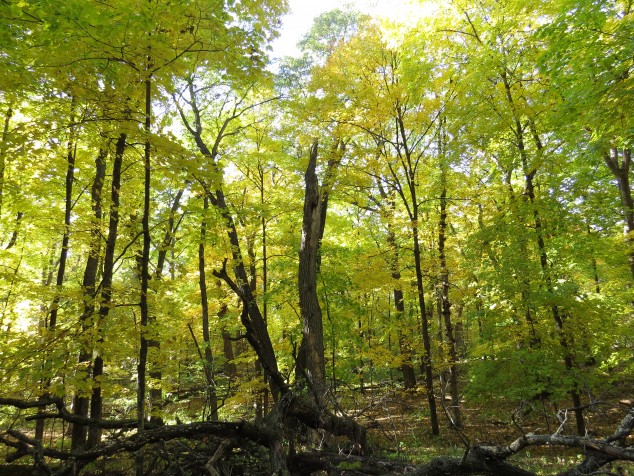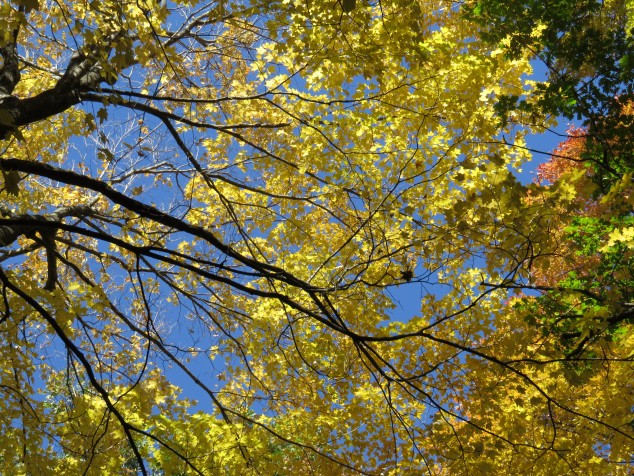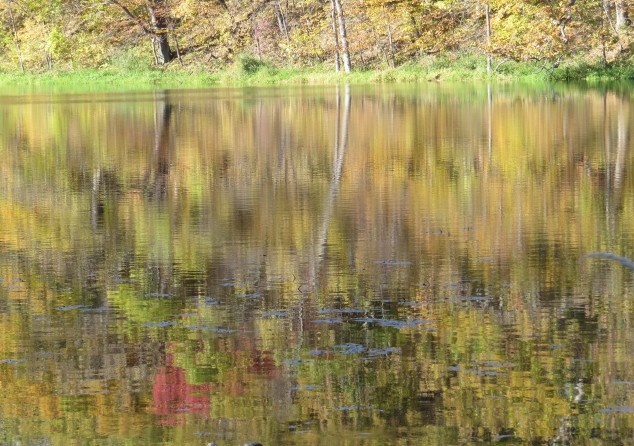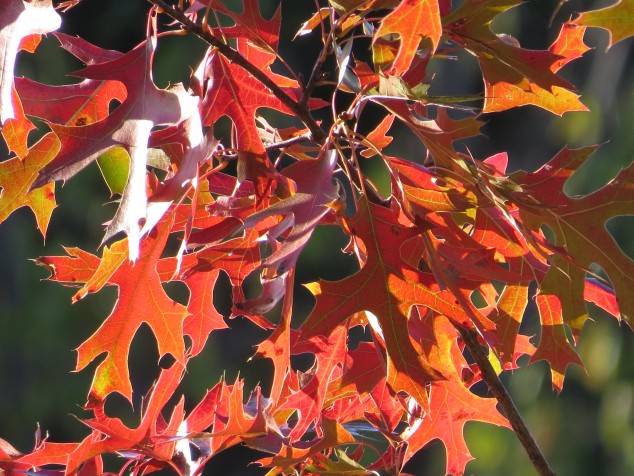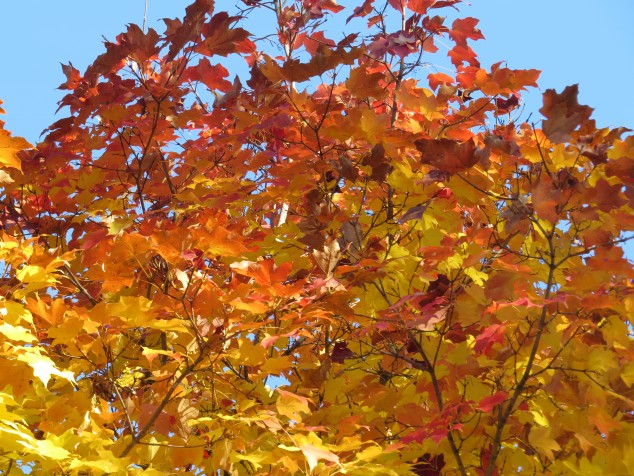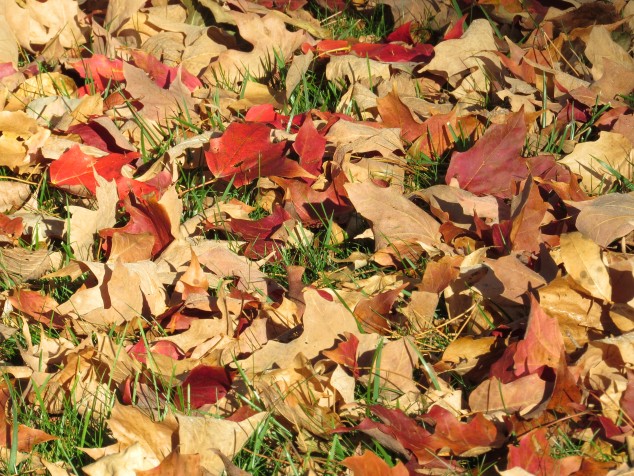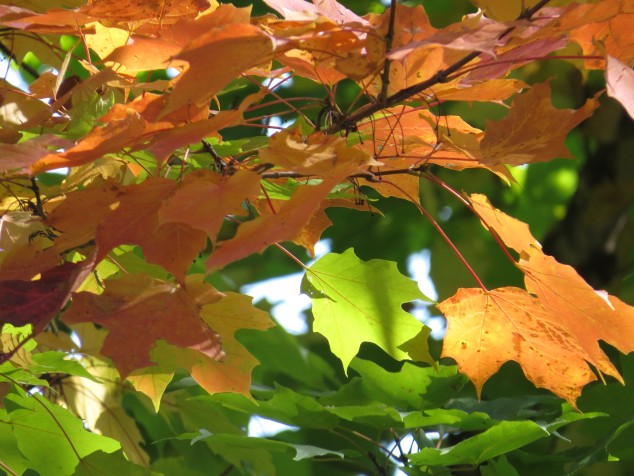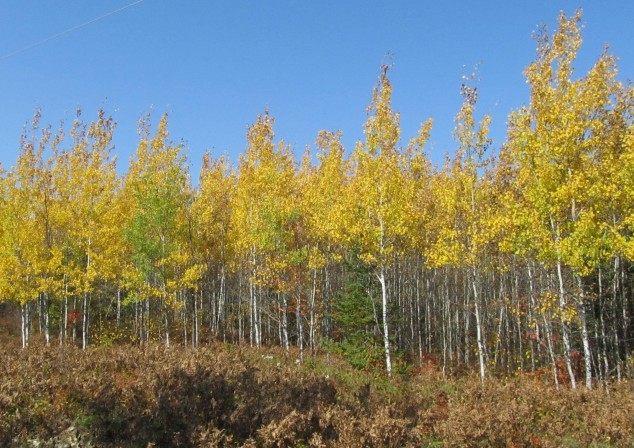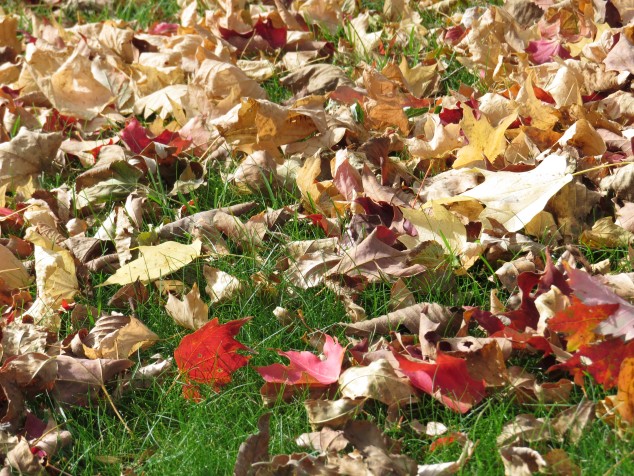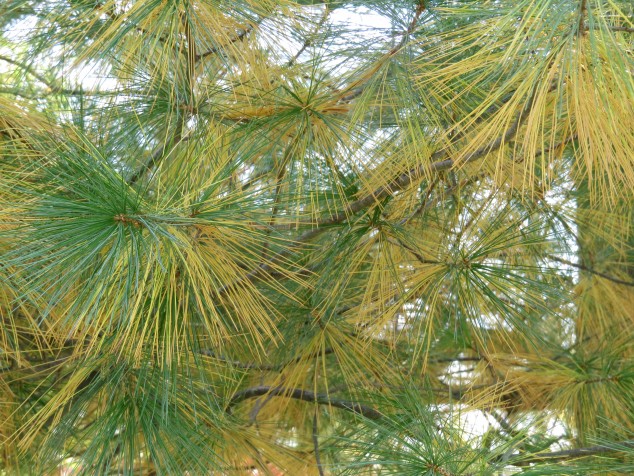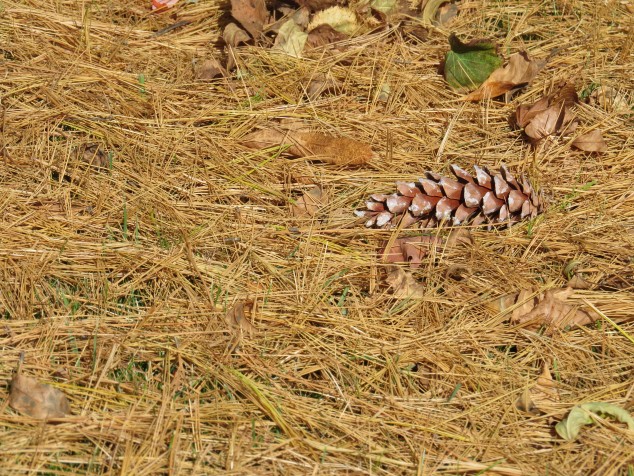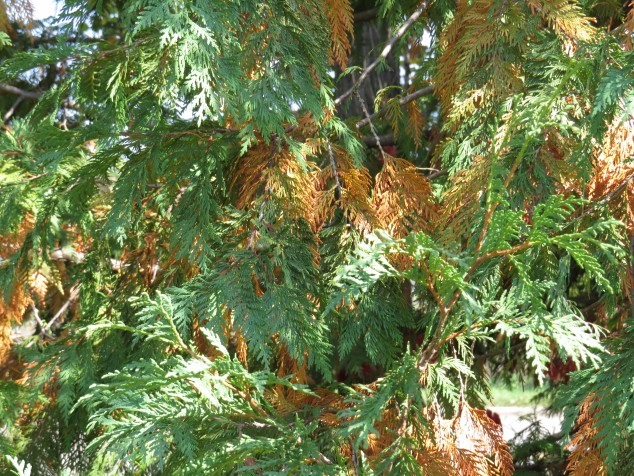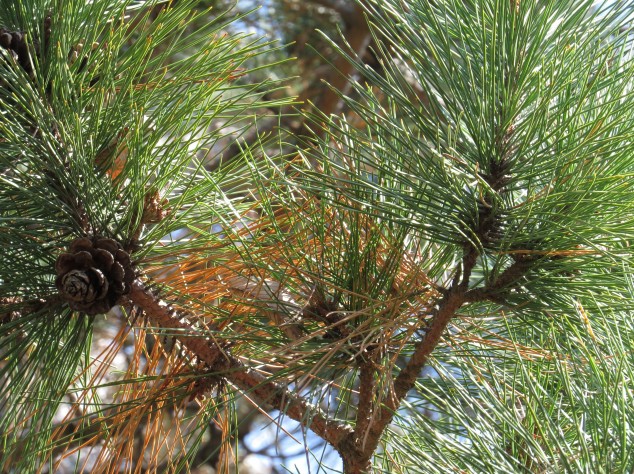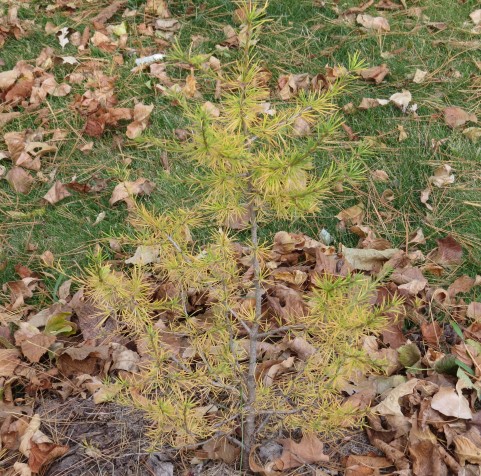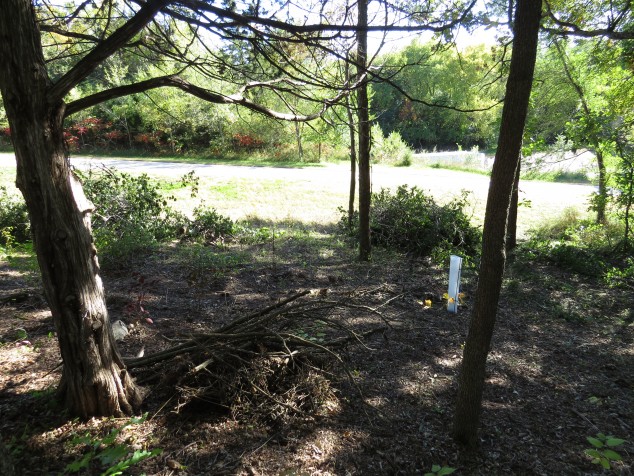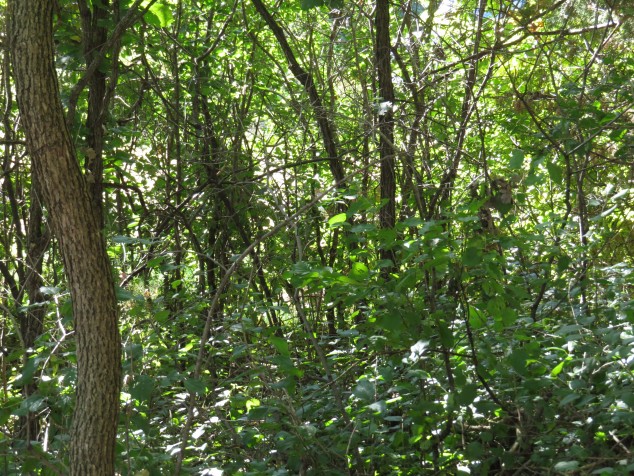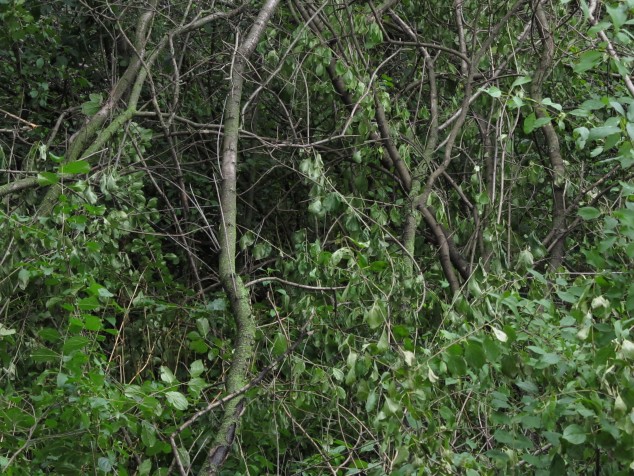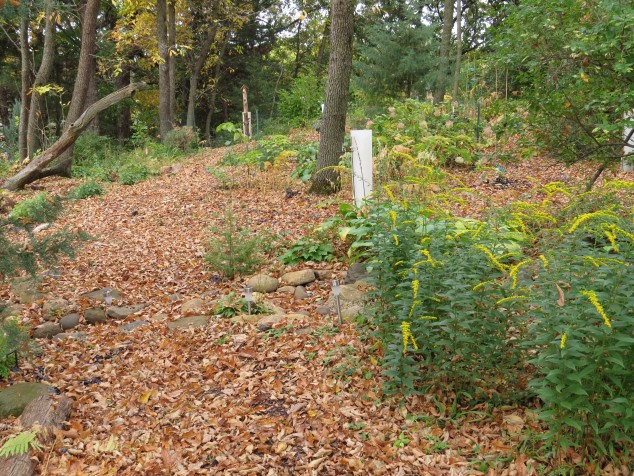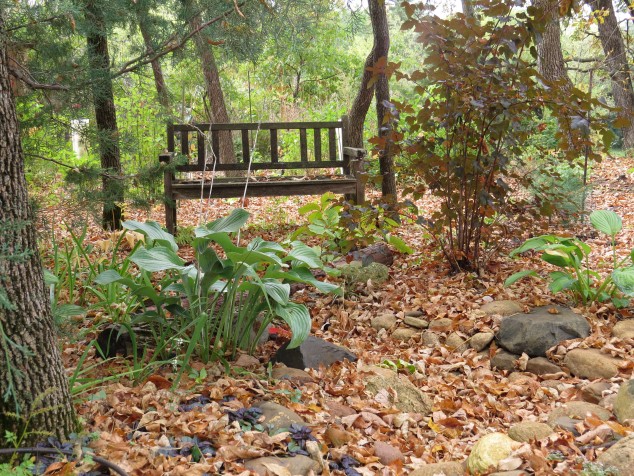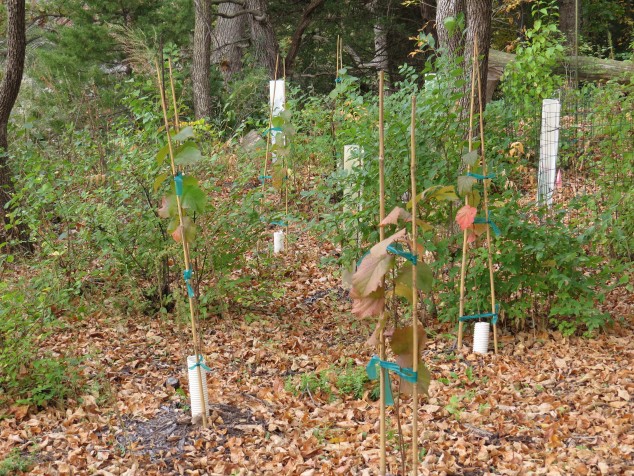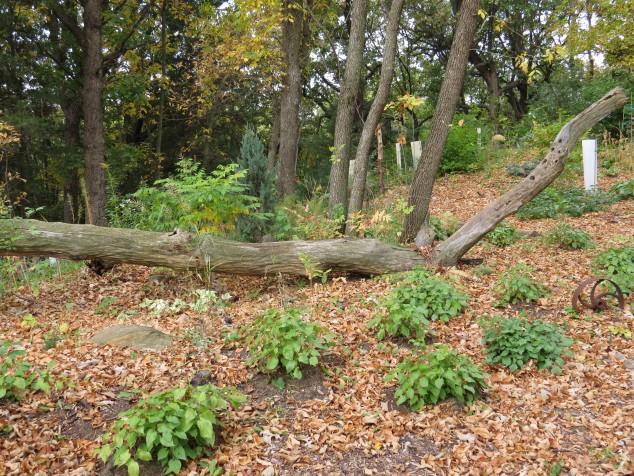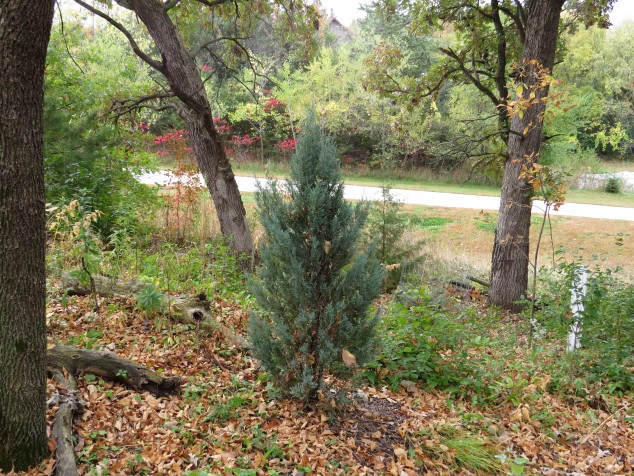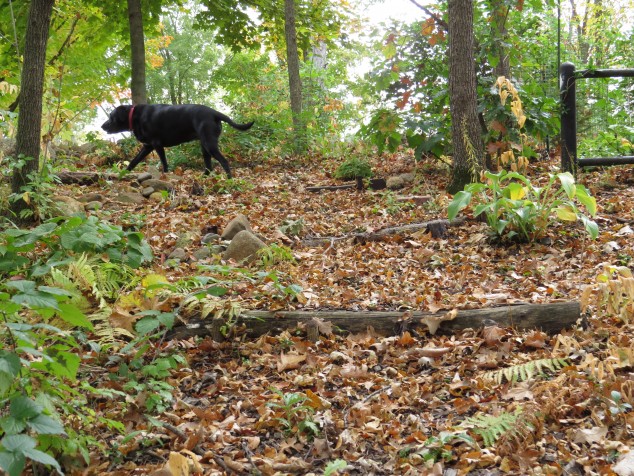When I woke up, I heard the slow plopping of rain drops through the leaf-clogged downspout outside the bedroom window. It was our best chance of rain in weeks, but it didn’t sound very promising. The dry weather at this time of year is wonderful for farmers harvesting beans and corn, but the trees, shrubs, and perennials need good, soaking rains in preparation for the harsh winter. Our sandy soil and the drying winter winds can zap the moisture away from the roots and the branches of the evergreen trees in particular, especially the young ones. So more watering will need to be done.
The drizzle had collected, then streaked down the screens of the porch, dotting and striping the landscape beyond.
The Diablo Ninebark had brightened to its fall color from the dark purple-red, and the honeysuckles had suddenly turned golden.
The heart-leaved bergenia had started its leaf by leaf color change, living up to its name in shape and color.
Apricot and rose-colored leaves on the gray dogwood looked vibrant against the drab, gray day.
Though the leaves were falling off the trees, a few flowers were still blooming–violet spikes of lavender, a rogue Canadian thistle, a rose-colored mum, and this daisy fleabane.
A young Nannyberry viburnum was the scaffolding for a spider’s web that connected to the golden honeysuckle, a vivid picture in front of the old oak tree trunk.
The leaves of the lupines were as green as ever, looking almost out-of-place in the autumn palette.
But the most amazing feature of the foggy woods was the tall, stately Monkshood! When most things are going dormant, these five foot tall spikes of violet-blue flowers are just coming into their own!
The beautiful late-bloomer dislikes hot weather, will grow in partial shade, and is poisonous, so the deer and rabbits don’t bother it. Each individual flower is shaped like a hood or helmet, giving rise to its common names.
A day of contrasts–the rain we had and the rain we needed, the gray, foggy day and the bright autumn colors, the dying, dormant plants and the vibrant blooming flowers.
I love the fact that the Monkshood blooms so late in the year–it’s so unexpected! And unlike the daisy fleabane that can easily be missed, the bright violet-blue flowers grab your attention and your admiration. Our lives are filled with contrasts, and how we look at them often determines the quality of our lives. Can we see the value and the goodness of one side of things even as that same thing causes more work or pain for us? Can we appreciate the brightness that may or may not be so noticeable on a dreary day? Can we be the sturdy scaffolding that holds the delicate, transient things in our lives? I will probably chop down that rogue thistle that announced itself with its conspicuous purple flower–I can acknowledge its beauty and know that I don’t want it seeding itself in our woods. But I will hold all these contrasts in my heart–with love–for it is within love that we can grow and bloom, die back and go dormant, and grow and bloom again.
